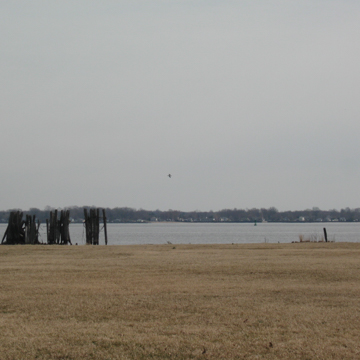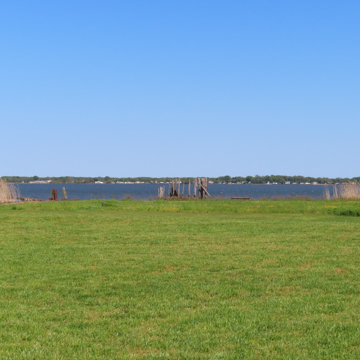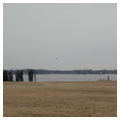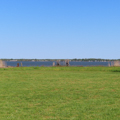Following establishment of the fort by Peter Stuyvesant, Dutch traders built homes along the riverfront just south—the genesis of New Castle. 2nd Street, oldest in town, approached the fort across a narrow isthmus, and the stronghold had marshes on three sides. Probably it resembled Dutch forts at Manhattan and elsewhere, square with earthen bastions at the corners. A contemporary account gives its riverfront length as 210 feet. It was garrisoned by nine soldiers with thirteen cannons (but no powder) when captured by the Swedes. The fort was demolished in the 1670s, and the site may have become a tannery. Fortunately, the “Fort Lot” was little-developed over the centuries. Starting in 1925, it served as a busy ferry terminal to New Jersey (ruined piers survive offshore). All traces of the fort were assumed to have washed away, as a stone marker of 1905 says, but limited archaeology in 1986 showed that it probably still exists beneath six feet of fill under a grassy lot. A ditch was found that may have formed part of the defenses. Various seventeenth-century artifacts came to light: yellow Dutch brick, majolica pottery from the Netherlands, and gray Rhenish stoneware.
You are here
Fort Casimir Site
If SAH Archipedia has been useful to you, please consider supporting it.
SAH Archipedia tells the story of the United States through its buildings, landscapes, and cities. This freely available resource empowers the public with authoritative knowledge that deepens their understanding and appreciation of the built environment. But the Society of Architectural Historians, which created SAH Archipedia with University of Virginia Press, needs your support to maintain the high-caliber research, writing, photography, cartography, editing, design, and programming that make SAH Archipedia a trusted online resource available to all who value the history of place, heritage tourism, and learning.










